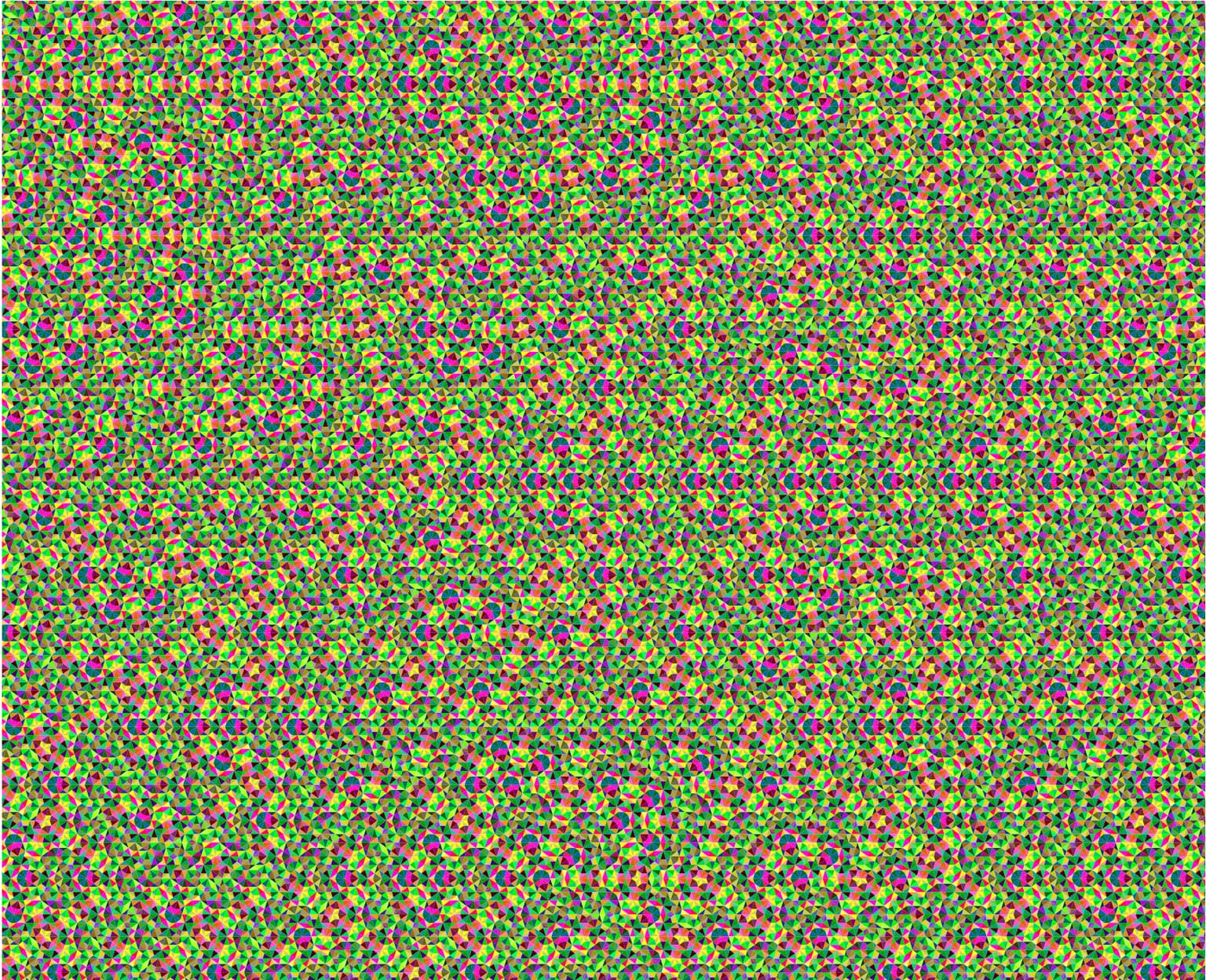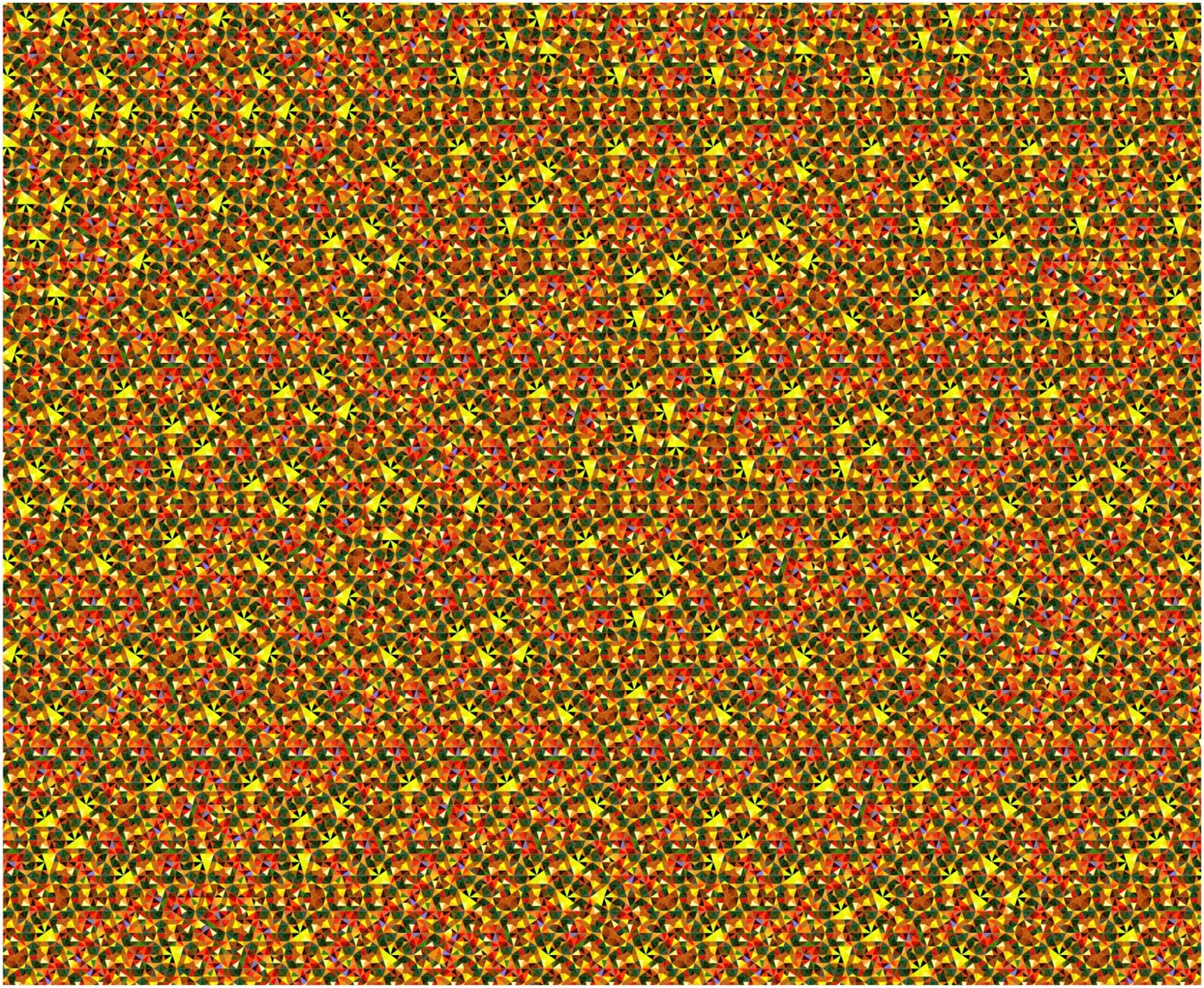Juan Escudero
Artists
Juan Escudero
Profesor Titular
Facultad de Ciencias Matematicas y Fisicas
Oviedo, Spain
Statement
Tiling problems have appeared in many branches of mathematics and physics, and during the last few decades there has been much progress in understanding their nature. Research on aperiodic tilings has been very intensive in connection with the field of mathematical quasicrystals. In the visual and sound arts, they have potential interest as systems of reference for channeling the expressive energies.
Artworks

SUPERFICIE RAMIFICADA Vb
24" x 30"
Digital Print
2011
Superficie Ramificada Vb is based on a branched surface that has been defined in order to study topological invariants related to a particular pentagonal tiling. The branched surface is represented in such a way that the triangles with the same shape, color and orientation correspond to the same tile in the CW complex. If somewhere in the tiling a tile shares an edge with another tile, then those two edges are identified. The cell complex contains one hundred and six tiles appearing in five different orientations ("Randomness and topological invariants in pentagonal tiling spaces", Discrete Dyn. Nat. Soc., in press).

SUPERFICIE RAMIFICADA Va
24" x 30"
Digital Print
2010
This work belongs to a series related to branched manifolds that appear in the study of tiling spaces. A previous work was presented at the 2011 Joint Mathematics Meetings Exhibition of Mathematical Art and was based on a substitution tiling belonging to a random ensemble (Int.J.Mod.Phys.B, Vol.17,n.15,p.2925, 2003, Zbl 1073.52009). The basic shapes here are the two golden triangles that appear in the Robinson decomposition of the Penrose tiling. The substitution rules for the two tiles of the uncollared tiling can be derived with the help of a construction for odd symmetries non divisible by three (Discrete Comput.Geom. Vol.15, p.221, 1996, MR96j:52035, Zbl0849.52016) which was later extended to any symmetry (J.Geom.Phys. Vol.58, p.1451, 2008, MR2010c:52026, Zbl1152.52009 and references therein). In contrast to the Penrose pattern this substitution does not force the border, the first cohomology group of the associated space of tilings is simpler while the second has higher rank.